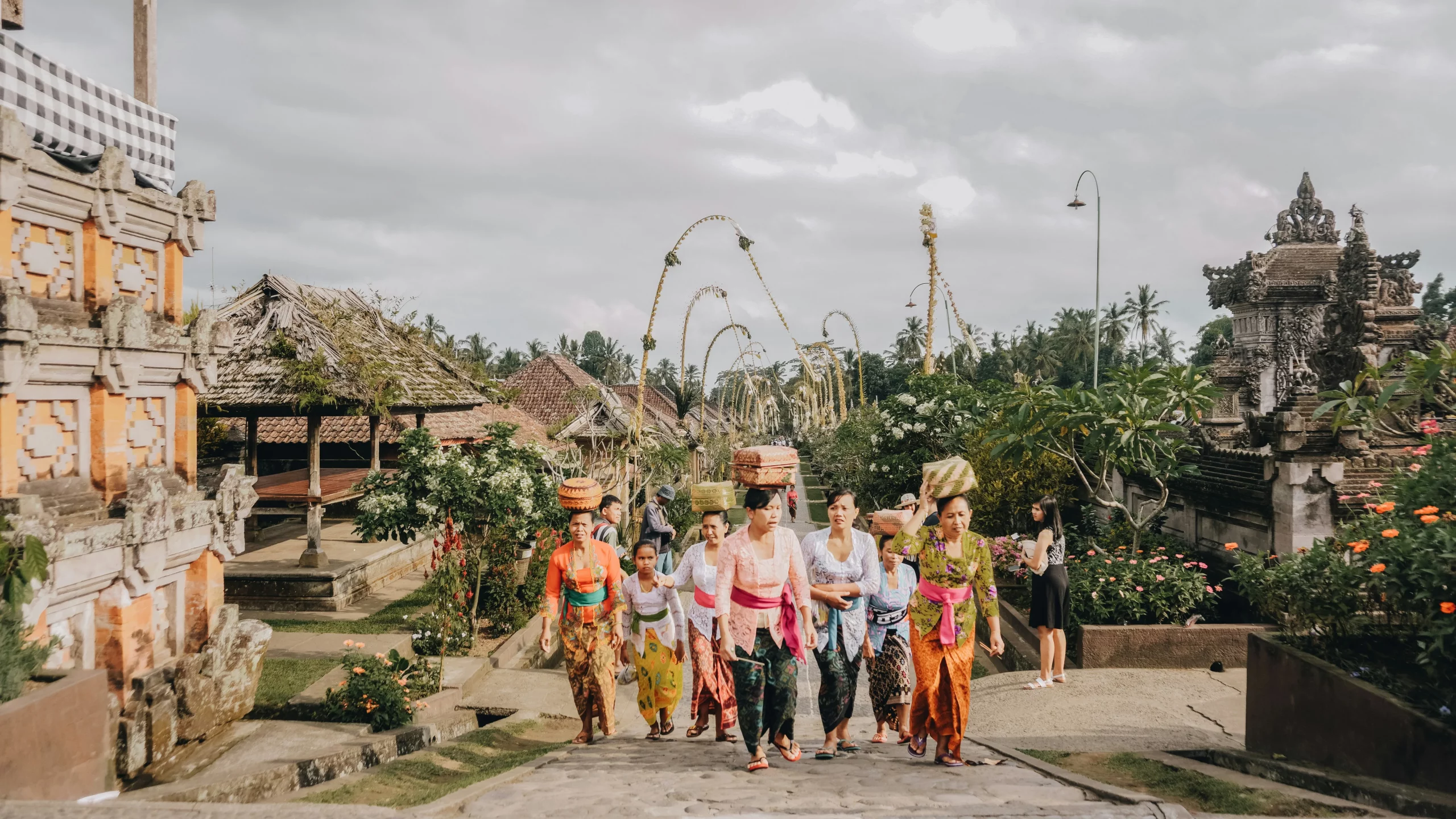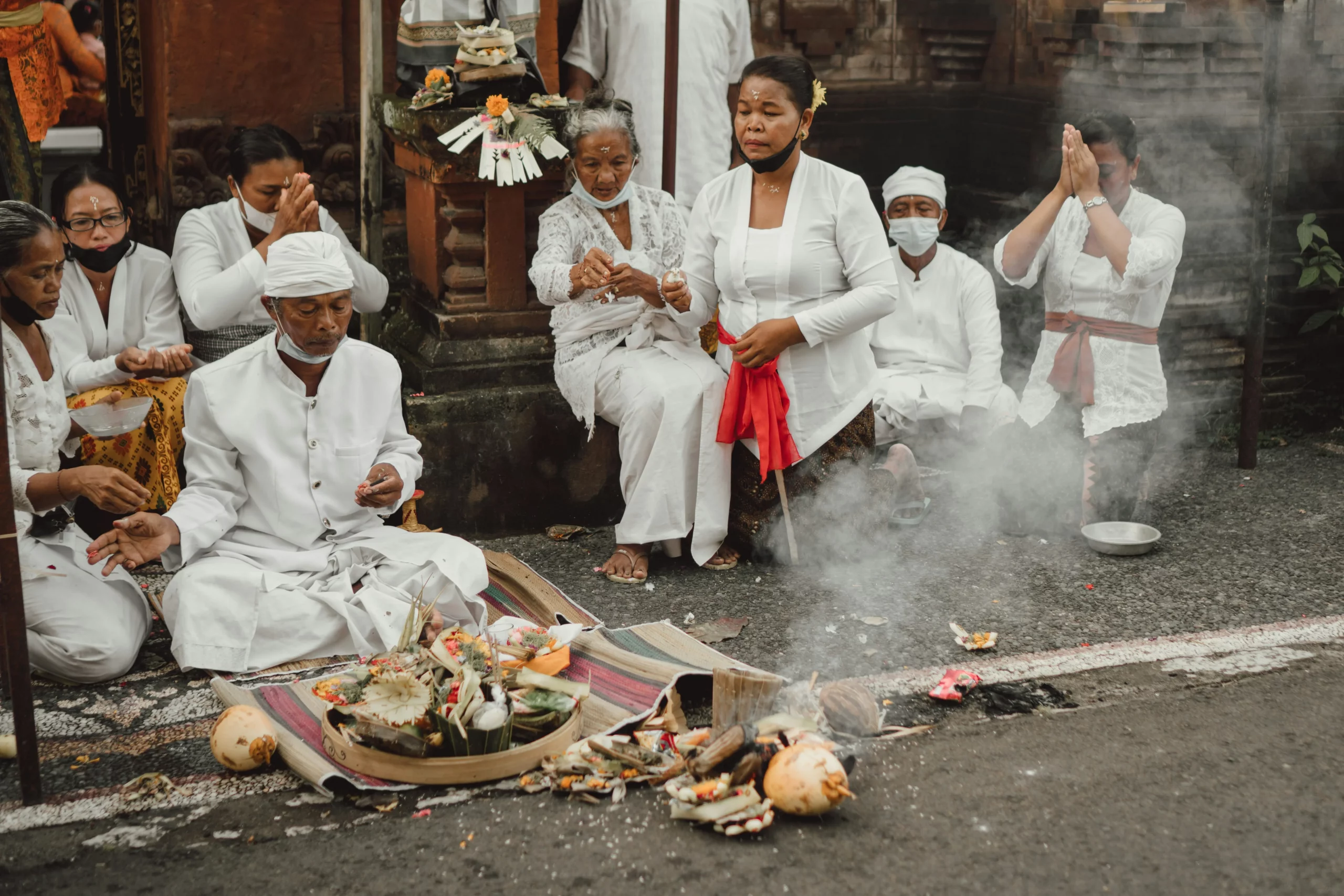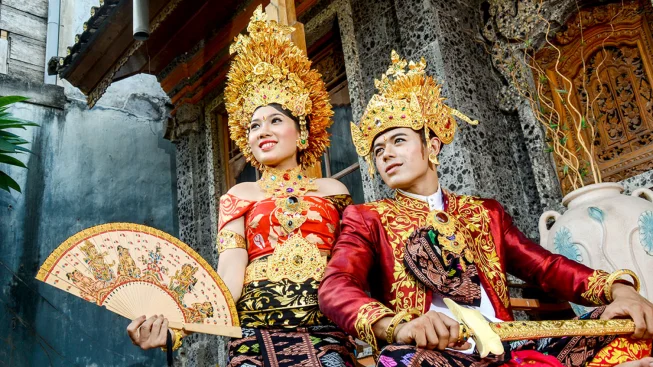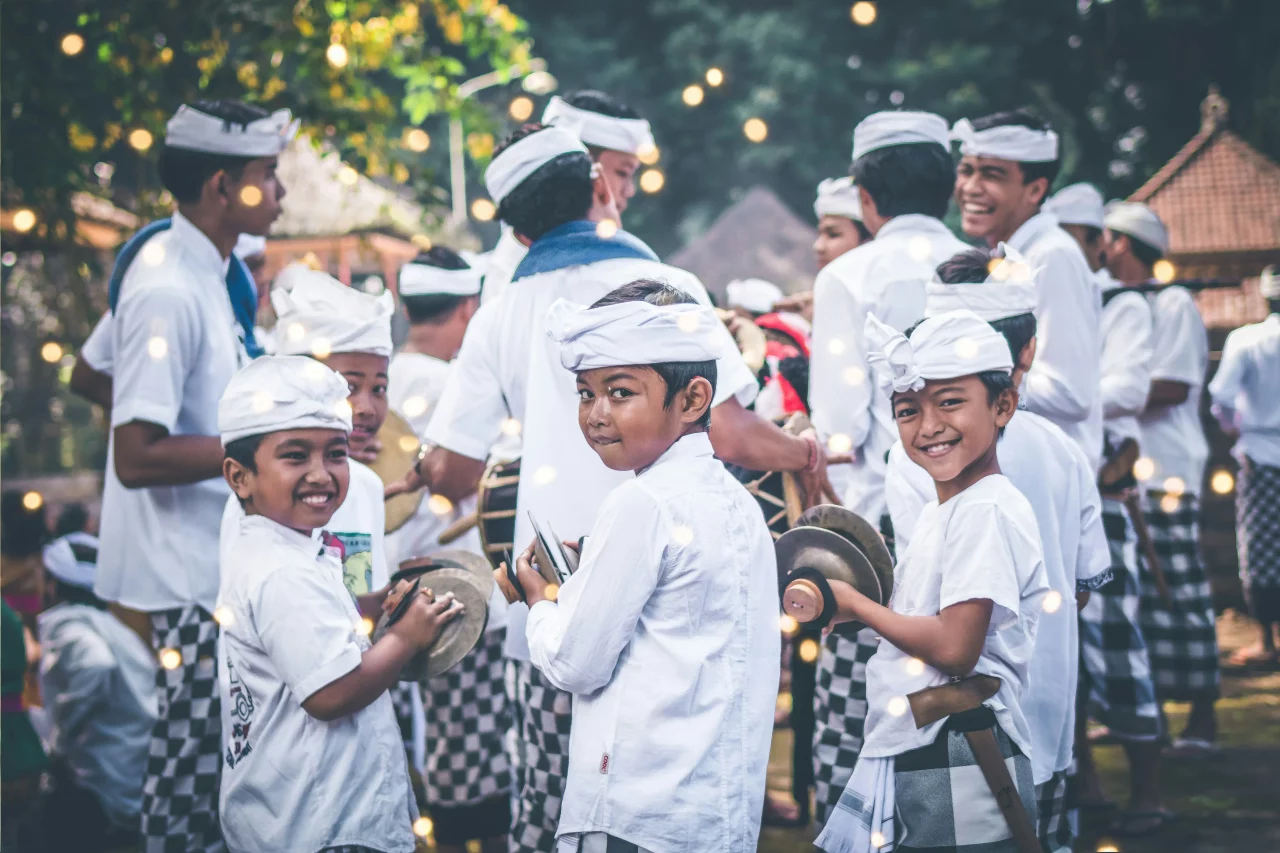During your stay in Bali, you’re likely to encounter locals adorned in distinctive and elegant traditional clothing, especially during rituals, ceremonies, or festivals. These Balinese traditional clothes are far more than mere garments; they are deeply intertwined with the island’s cultural and spiritual ethos. Hence, understanding the significance of these traditional clothes will greatly enhance your experience on this captivating island.
In this article, we aim to provide a deeper insight into the realm of Balinese traditional clothing, exploring their importance, the occasions they are worn, and delving into various styles, including Payas Madya, Payas Alit, and Payas Agung.
Why Are Balinese People Wearing Traditional Clothes?
Stepping onto the vibrant island of Bali, you’ll be immediately struck by the sight of locals wearing their stunning traditional attire. However, these garments aren’t just fashionable outfits; they represent an intricate tapestry woven with threads of respect, heritage, and spirituality. Let’s explore the reasons why the Balinese frequently wear their traditional clothing on a daily basis and cherish them so deeply.
1. A Deeper Meaning than Fashion
In Bali, traditional clothing goes far beyond mere fashion trends. These garments are a potent symbol of respect for their deities and ancestors. Every intricate pattern and vibrant colour tells a tale of deep spiritual connections. Wearing these Balinese traditional clothes becomes an act of devotion, a way to connect with their rich heritage and proudly showcase their distinct cultural identity.
2. Awe-Inspiring Elegance
Apart from their spiritual essence, Balinese clothes are truly breathtaking. Their visual splendour of intricate batik patterns and vivid hues has enchanted numerous admirers. The exceptional craftsmanship and artistry invested in each garment stand as a testament to the island’s commitment to preserving its textile traditions. For some, the sheer beauty and elegance of these Balinese traditional clothes are reasons enough to wear them.
3. Wearing Their Hearts on Their Sleeves
In essence, Balinese traditional clothes are more than just fabric and thread. They serve as a vibrant expression of the island’s soul embodying its lasting traditions and providing a glimpse into its profound spirituality. Whether worn for religious devotion, cultural pride, or simply for an appreciation of beauty, these garments tell a captivating and inspiring story.
So, the next time you encounter a local in their traditional finery, remember, you’re not just witnessing fashion; you’re glimpsing into the heart and soul of a remarkable culture.
When Do Balinese Wear Traditional Clothes?
Traditionally, Balinese people wear their traditional clothes during religious ceremonies, weddings, temple festivals, and special cultural events. These occasions provide a unique opportunity for locals to showcase their cultural pride and connect with their spirituality. However, in recent times, especially in rural areas, it’s not uncommon to spot individuals adorned in Balinese traditional clothes as part of their everyday lives, underlining the enduring influence of Balinese culture.
Bali Traditional Clothes Types
In Bali, traditional clothes come in various styles, each designed for specific purposes and suitable for diverse occasions, including religious rituals, tooth-filing ceremonies, Ngaben or cremation ceremonies, government or community meetings, and other events. Furthermore, there are also traditional Balinese clothes commonly worn in day-to-day life.
1. Payas Madya


Payas Madya represents Balinese traditional clothes commonly worn for everyday activities. With no strict rules on its usage, this attire seamlessly combines elegance and comfort, making it a favoured choice among locals during their daily engagements. Comprising three essential components—kamen, selendang, and udeng—Payas Madya features kamen, a cloth wrapped around the lower body from the waist to the ankles; selendang, a scarf functioning as a belt; and udeng, a headband for men. Typically, locals pair these Balinese clothes with informal tops—men may opt for white t-shirts or shirts, while women often wear simple, colourful kebayas.
2. Payas Alit


Payas Alit is typically worn for religious ceremonies at temples or during traditional gatherings with the community or government. A distinctive feature of these Balinese traditional clothes is the white top, with men donning white shirts and women opting for white kebayas. This top is then paired with a lower-body wrap (kamen) and a waist scarf (selendang). Specifically for men, it is essential to wear a white udeng, or headband. The choice of the colour white is intentional, aiming to create a more sacred atmosphere, as white symbolises purity.
3. Payas Agung


Payas Agung stands out as the most luxurious and distinctive traditional Balinese clothes. Reserved for special occasions rather than everyday wear, this clothing is adorned during various traditional events such as weddings, tooth-filing ceremonies, munggah deha or coming-of-age ceremonies, and more. Payas Agung is characterised by vibrant colours like red, gold, and white, symbolising opulence in Bali. Women’s attire comes complete with an elaborate and towering gold crown, while men’s clothing features a keris embellished with jewels.
Conclusion
In conclusion, gaining insight into the details of Balinese traditional clothes enhances one’s understanding and appreciation of the island’s rich culture, especially if you’re contemplating living in Bali. These garments are not just clothing but are a tapestry of history, belief, and identity, woven into the daily lives of the Balinese people.
It’s important to remember that traditional Balinese clothing is more aligned with Balinese culture than with any specific religion. Consequently, individuals, regardless of their religious background, are welcome to wear these attires. As a tourist or newcomer, you might even consider trying on or renting traditional Balinese clothes for an authentic Bali experience. However, it is crucial to approach this with respect for the locals and their cultural heritage. By understanding the significance of these traditional clothes and approaching them with reverence, you can ensure that this experience is one of cultural appreciation and exchange.








One comment
Owehems
November 14, 2024 at 12:25 pm
53 323; Itakura et al can you buy priligy over the counter